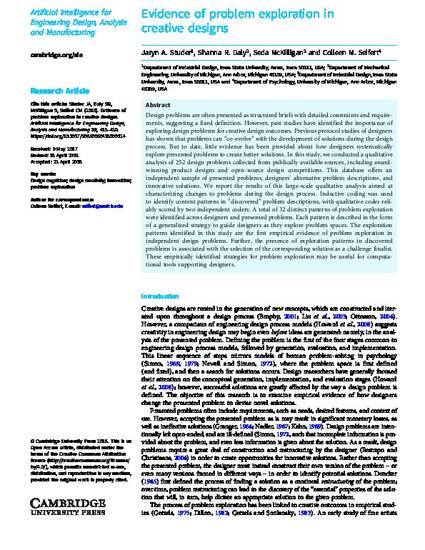
Design problems are often presented as structured briefs with detailed constraints and requirements, suggesting a fixed definition. However, past studies have identified the importance of exploring design problems for creative design outcomes. Previous protocol studies of designers has shown that problems can “co-evolve” with the development of solutions during the design process. But to date, little evidence has been provided about howdesigners systematically explore presented problems to create better solutions. In this study, we conducted a qualitative analysis of 252 design problems collected from publically available sources, including award-winning product designs and open-source design competitions. This database offers an independent sample of presented problems, designers’ alternative problem descriptions, and innovative solutions. We report the results of this large-scale qualitative analysis aimed at characterizing changes to problems during the design process. Inductive coding was used to identify content patterns in “discovered” problem descriptions, with qualitative codes reliably scored by two independent coders. A total of 32 distinct patterns of problem exploration were identified across designers and presented problems. Each pattern is described in the form of a generalized strategy to guide designers as they explore problem spaces. The exploration patterns identified in this study are the first empirical evidence of problem exploration in independent design problems. Further, the presence of exploration patterns in discovered problems is associated with the selection of the corresponding solution as a challenge finalist. These empirically identified strategies for problem exploration may be useful for computational tools supporting designers.
Available at: http://works.bepress.com/seda-yilmaz/48/

This article is published as Studer JA, Daly SR, McKilligan S, Seifert CM (2018). Evidence of problem exploration in creative designs. Artificial Intelligence for Engineering Design, Analysis and Manufacturing 32, 415–430. Doi: 10.1017/S0890060418000124. Posted with permission.